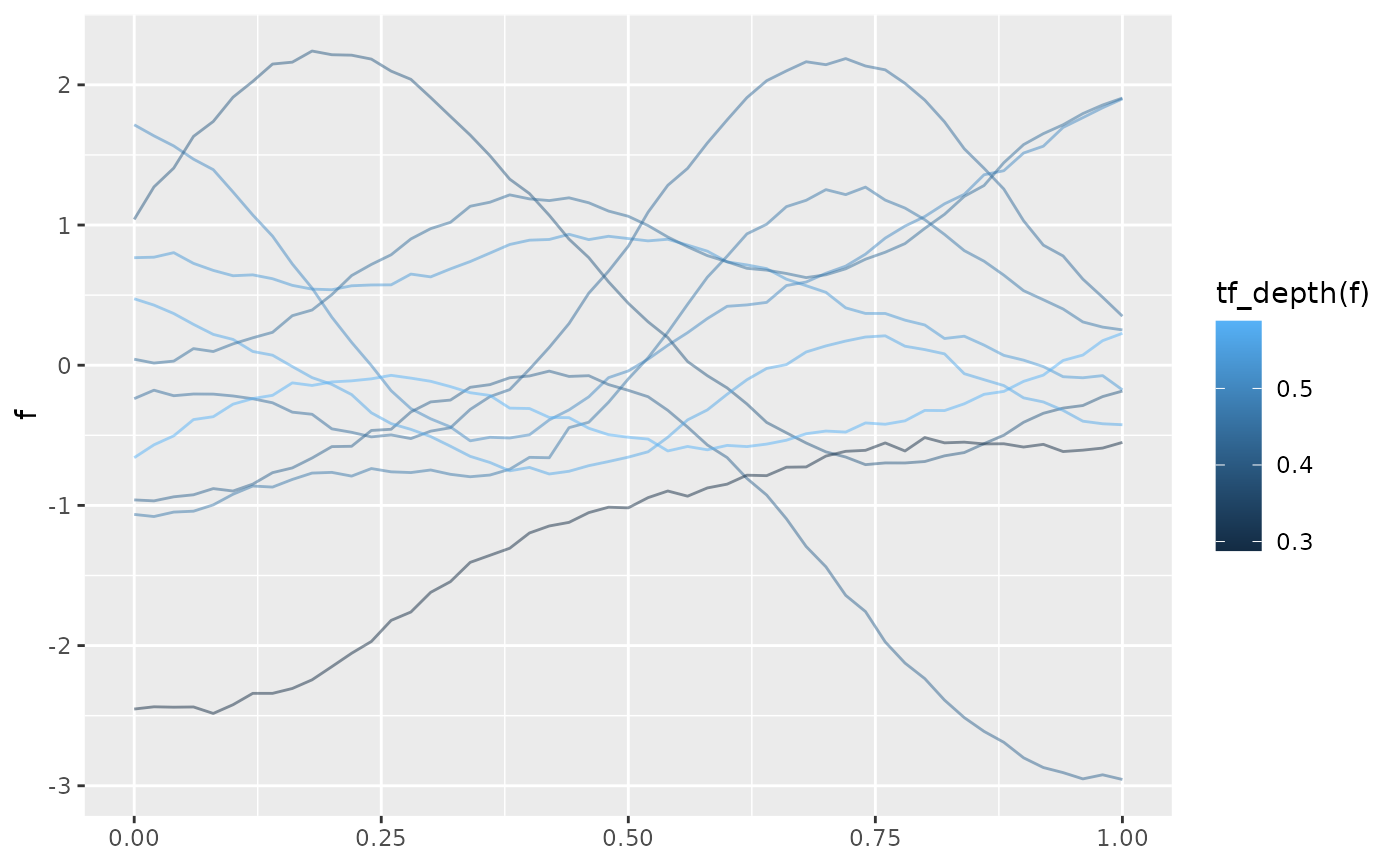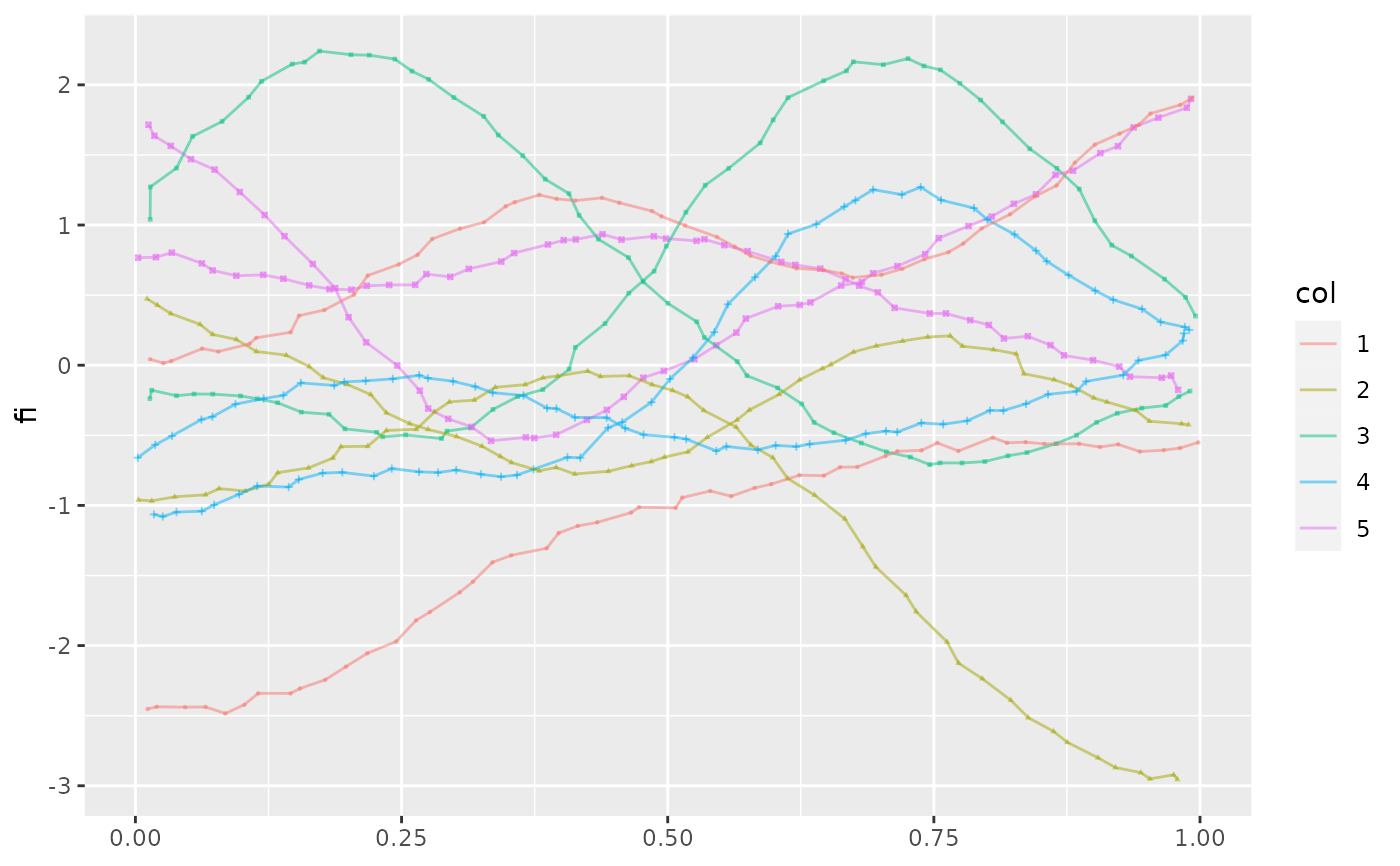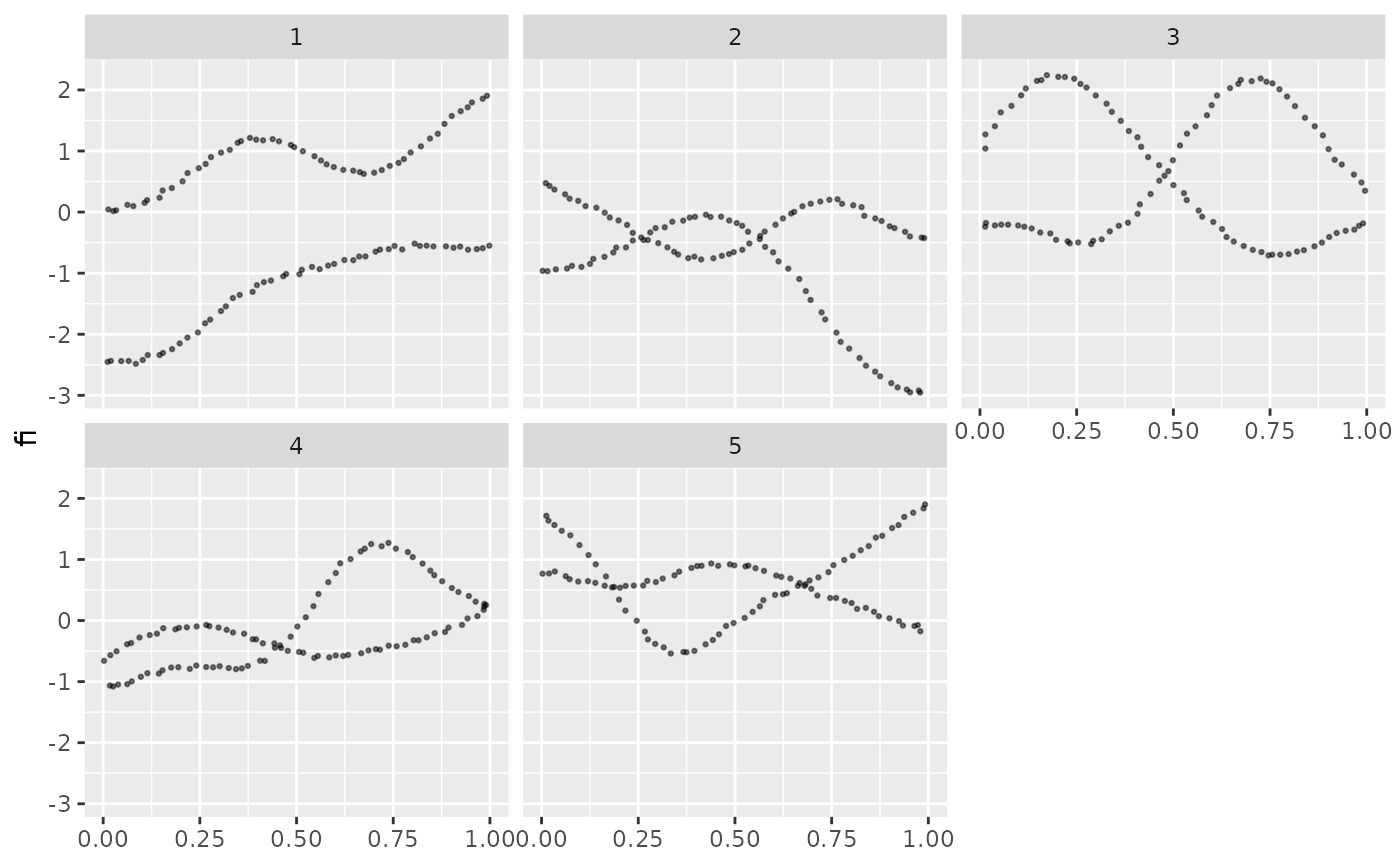Plots a line for each entry of a tf-object.
geom_spaghetti does spaghetti (i.e. "hairball") plots, geom_meatballs
does spaghetti plots with points for the actual evaluations.
Usage
stat_tf(
mapping = NULL,
data = NULL,
geom = "spaghetti",
position = "identity",
na.rm = TRUE,
show.legend = NA,
inherit.aes = TRUE,
arg = NULL,
...
)
geom_spaghetti(
mapping = NULL,
data = NULL,
position = "identity",
na.rm = TRUE,
show.legend = NA,
inherit.aes = TRUE,
arg = NULL,
...
)
geom_meatballs(
mapping = NULL,
data = NULL,
position = "identity",
na.rm = TRUE,
show.legend = NA,
inherit.aes = TRUE,
arg = NULL,
spaghetti = TRUE,
...
)Arguments
- mapping
Set of aesthetic mappings created by
aes(). If specified andinherit.aes = TRUE(the default), it is combined with the default mapping at the top level of the plot. You must supplymappingif there is no plot mapping.- data
The data to be displayed in this layer. There are three options:
If
NULL, the default, the data is inherited from the plot data as specified in the call toggplot().A
data.frame, or other object, will override the plot data. All objects will be fortified to produce a data frame. Seefortify()for which variables will be created.A
functionwill be called with a single argument, the plot data. The return value must be adata.frame, and will be used as the layer data. Afunctioncan be created from aformula(e.g.~ head(.x, 10)).- geom
The geometric object to use to display the data, either as a
ggprotoGeomsubclass or as a string naming the geom stripped of thegeom_prefix (e.g."point"rather than"geom_point")- position
Position adjustment, either as a string naming the adjustment (e.g.
"jitter"to useposition_jitter), or the result of a call to a position adjustment function. Use the latter if you need to change the settings of the adjustment.- na.rm
remove NAs? defaults to
TRUE- show.legend
logical. Should this layer be included in the legends?
NA, the default, includes if any aesthetics are mapped.FALSEnever includes, andTRUEalways includes. It can also be a named logical vector to finely select the aesthetics to display.- inherit.aes
If
FALSE, overrides the default aesthetics, rather than combining with them. This is most useful for helper functions that define both data and aesthetics and shouldn't inherit behaviour from the default plot specification, e.g.borders().- arg
where to evaluate the functions in
y-- defaults to the default ;)- ...
Other arguments passed on to
layer(). These are often aesthetics, used to set an aesthetic to a fixed value, likecolour = "red"orsize = 3. They may also be parameters to the paired geom/stat.- spaghetti
plot noodles along with meatballs? defaults to TRUE.
See also
geom_cappelini() for glyph plots, gglasagna() for heatmaps.
Other tidyfun visualization:
ggcapellini,
gglasagna()
Other tidyfun visualization:
ggcapellini,
gglasagna()
Other tidyfun visualization:
ggcapellini,
gglasagna()
Other tidyfun visualization:
ggcapellini,
gglasagna()
Other tidyfun visualization:
ggcapellini,
gglasagna()
Other tidyfun visualization:
ggcapellini,
gglasagna()
Other tidyfun visualization:
ggcapellini,
gglasagna()
Examples
set.seed(1221)
data <- data.frame(col = sample(gl(5, 2)))
data$f <- tf_rgp(10)
data$fi <- tf_jiggle(data$f)
data$fb <- tfb(data$f)
#> Percentage of input data variability preserved in basis representation
#> (per functional observation, approximate):
#> Min. 1st Qu. Median Mean 3rd Qu. Max.
#> 99.20 99.75 99.90 99.79 99.90 100.00
library(ggplot2)
ggplot(data, aes(y = f, color = tf_depth(f))) +
geom_spaghetti()
 ggplot(data, aes(y = fi, shape = col, color = col)) +
geom_meatballs()
ggplot(data, aes(y = fi, shape = col, color = col)) +
geom_meatballs()
 ggplot(data, aes(y = fi)) +
geom_meatballs(spaghetti = FALSE) +
facet_wrap(~col)
ggplot(data, aes(y = fi)) +
geom_meatballs(spaghetti = FALSE) +
facet_wrap(~col)
